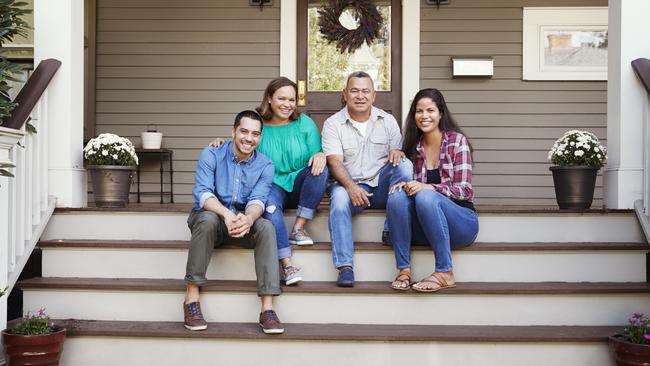The extended stay: When the kids won’t leave
The trend of extended cohabitation with parents is affecting housing preferences – and it’s here to stay.

The transition from childhood to adulthood often encompasses a significant milestone: moving out of the parental home. In recent years, there has been a notable shift in the traditional trajectory of young adults leaving the nest and establishing independent lives. Many young adults choose to stay longer at the parental home. This delay in the transition to independent living is not merely a personal choice but carries significant implications for both individuals and society at large.
From shaping housing market dynamics to influencing consumer behaviour and demographic trends, the decision of when and how young adults leave the nest reverberates throughout various facets of society.
When young adults move out of their parents’ homes, it creates demand for housing units, whether rental or for purchase. This increased demand stimulates the property market, driving construction activity and property sales.
Moving out of the parental home often involves spending on furniture, appliances, home decor, and other household goods. This consumption stimulates economic activity and benefits businesses in industries related to home furnishing, interior design, and home improvement.
To study this trend, let’s have a closer look at persons between ages 18 and 29 who are living in families or households with dependent students or non-dependent children from the ABS census data. For convenience let’s call them “stay-at-nesters”.
In the ABS census, about 3.9 million individuals aged 18 to 29 were surveyed. Among them, roughly 1.4 million, or 38 per cent, chose to stay at home, representing a notable portion of this demographic. This group saw a 4-percentage point increase since the 2006 census. The most substantial change was seen among 19-year-olds, where the number rose by about 10 per cent. Following closely were 18-year-olds and 20-year-olds, both witnessing significant shifts of 9 per cent.
Moreover, individuals aged 23, 24, and 25 saw increases of 8 per cent, 7 per cent, and 6 per cent respectively. Those aged 26 to 29 experienced a more modest 2 per cent increase on average.
These figures illustrate a clear trend toward delayed independent living among young adults.
Comparison of the male to female proportions at each age showed that young men were more likely to be living with parents than young women.
In 2021, about 41 per cent of men lived with their parents compared with 34 per cent for women.
This trend is also more pronounced in the capital cities (40 per cent) compared with the regional areas (32 per cent). This could be due to the pursuit of higher education or employment opportunities.
The capital cities host some of the best universities around the country and this might be a reason why there are fewer persons in the regions who are stay-at-nesters.
With the increasing emphasis on higher education and the pursuit of advanced degrees, young adults in urban areas with access to universities may delay moving out to continue their studies.
According to data published by the National Skills Commission, about 92 per cent of new jobs created in the five years to November 2026 will require post-school education and more than three fifths of the total projected employment growth will occur in high skill level jobs where tertiary qualifications are a must to perform the duties on the job.
According to ABS Census data, in 2021 about 49 per cent of stay-at-nesters were engaged in tertiary education compared with 21 per cent for those who did not stay with family. Pursuing further education often requires additional time and financial resources, further contributing to the delay in leaving the parental home.

Economic factors play a significant role. High costs of living, student loan debt, and difficulties in finding stable employment can delay the age of moving out.
According to the ATO, in the fiscal year 2020-21, there were about 2.9 million people with a HECS-HELP debt. The average debt was estimated to be $24,771 during this period.
Additionally, young adults who move out of their parental homes often live in shared accommodations initially until they are financially stable. Remaining with parents offers a familiar living environment, maintaining the comforts and routines they’ve grown accustomed to.
This choice can also alleviate the necessity for part-time employment, allowing them to focus more on their studies.
Analysing the mental health of individuals aged 18 to 29 reveals that stay-at-nesters are less prone to long-term mental health issues such as anxiety and depression compared to those living independently.
Approximately 11 per cent of stay-at-nesters faced mental health challenges, whereas 13 per cent of those not residing with family experienced similar issues.
A breakdown by age groups further highlights interesting trends. Among 18- to 24-year-olds, those living away from their parental homes were more likely to encounter mental health challenges (11 per cent for stay-at-nesters v 15 per cent for non-cohabiters).
Conversely, among 25- to 29-year-olds, individuals staying with their families showed higher rates of mental health conditions (14 per cent for stay-at-nesters v 11 per cent for non-cohabiters).
Living with parents may provide a built-in support network, which can help some young adults cope with stressors and challenges. Staying with parents can offer financial stability by reducing living expenses such as rent, utilities, and groceries while concentrating on personal growth and development.
Likewise, for some parents, this dynamic can prove beneficial. The presence of adult children in the household can supply emotional solace and camaraderie, especially for parents who live alone or grapple with health issues or feelings of isolation.
Adult children can extend care, companionship, and aid with daily tasks, thereby enhancing their parents’ overall wellbeing.
Young men and women who were living with their parents were more likely to be carers, compared to those not living with parents. Across all 18- to 29-year-olds, 6 per cent of those living with their parents provided care compared to 5 per cent of those not living with their parents.
Overall, this trend carries significant implications for the property industry. The growing number of adults residing with their parents may drive an uptick in multi-generational households.
Families may opt to modify their housing setups to accommodate multiple generations under one roof, potentially involving renovations or buying larger homes with distinct living spaces for each family member while still sharing common areas.
Moreover, parents may adjust their housing decisions in anticipation of having adult children living with them for an extended period. This might entail considerations such as downsizing later in life or investing in properties conducive to multi-generational living arrangements.
Young adults who prolong their stay with their parents may postpone home ownership decisions.
Rather than investing in their own property, they may opt to save money or pursue other financial objectives while benefiting from the comparatively lower expenses of living with their parents.
Extended cohabitation with parents may also influence the housing preferences of young adults. They may prioritise factors such as proximity to family, affordability, and flexibility in housing arrangements when contemplating their future living situations.
The trend of extended cohabitation with parents is sending ripples throughout the housing market, shaping the decisions of both young adults and their families, and is here to stay.
Hari Hara Priya Kannan is data scientist at The Demographics Group






To join the conversation, please log in. Don't have an account? Register
Join the conversation, you are commenting as Logout